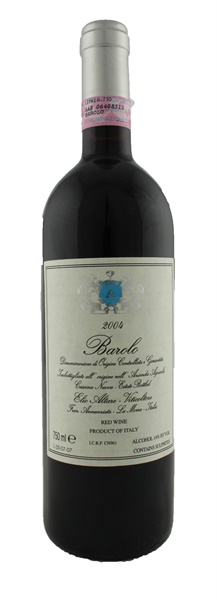
...sweet, dense wine loaded with considerable fruit that hides the tannic structure that lurks underneath. Licorice, menthol, baking spices and dark red fruit all make an appearance in this superbly well-proportioned Barolo.
Very intense aromas of ripe fruit and fresh-cut flowers. Turns to nectarine. Full-bodied, with very polished yet abundant tannins. Long and caressing. Balanced and pretty.
Still deep, powerful and intense, the 2004 remains primary and fruit-driven, with little, if any signs of tertiary development. Hints of dark cherry, plum, spice, licorice and new leather open up on the supple, textured finish...